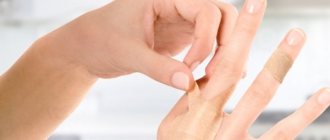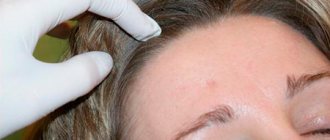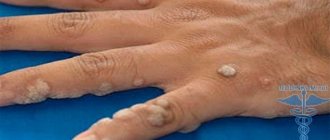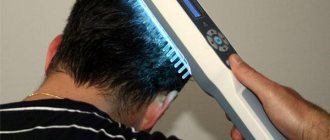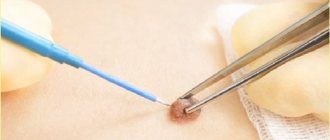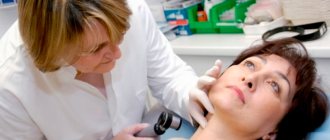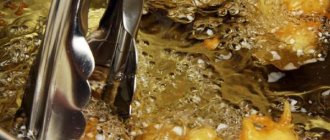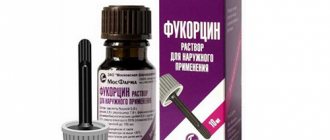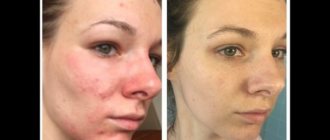Last Updated on 06/23/2017 by Perelomanet
How long it takes for burns to heal is a pressing question for everyone. After all, a lesion with a long healing period causes a lot of trouble, discomfort and pain. And there are quite a lot of factors that cause such damage, even in traditional living conditions, for example, scalding with hot water, faulty electrical appliances, or others. Before answering the question, you need to understand what a burn is, why it is dangerous, and how to treat it.
- What to do if you have a sunburn
- 2nd degree burn: first aid and treatment
- 3rd degree burn: first aid and treatment
A burn is a violation of the integrity of the skin under the influence of various factors, such as radiation and ultraviolet radiation, chemicals, electricity, etc. The most common factors are thermal effects of hot liquids, since in domestic conditions the most common cases of scalding and injury during cooking are also sunburn, which is caused by excessive exposure to ultraviolet radiation.
The physiology of injury is quite simple. Tissue protein functions normally at external temperatures up to 45 degrees Celsius. An increase in temperature associated with thermal processes, chemical or whatever, leads to protein coagulation (coagulation), and, as a consequence, to disruption of the normal functioning of body tissues. With prolonged exposure to a negative factor, red blood cells and other tissues are destroyed. The longer the detrimental effect, the more difficult the subsequent recovery process.
Features of healing of burns of different types
There are four types of burn injuries.
Thermal
The first place among household injuries is occupied by thermal burns. Injury occurs due to exposure to high temperatures. A person can get burned on a hot iron, curling iron, or boiling water.
If there are no problems with the immune system, 1st-2nd degree burns can be treated independently. The first step is to run the affected area under cold running water for about ten minutes. The second step is to fight inflammation and pain.
There is an extensive list of anti-burn products: sprays, ointments and anti-burn patches. They provide an analgesic, anti-inflammatory effect, and help the wound heal.
It is not recommended to remove a blister with liquid that appears on the damaged area; there is a risk of infection and severe pain. A wet burn may occur if the blisters burst. It must be dried with the help of preparations that form a protective film on the wet skin. With proper care, the injury will disappear on its own within a few days.
Electric
In addition to thermal injuries, it is fraught with effects on the cardiac and respiratory systems. Electric shocks can cause deep injuries to the body. Weak lesions (220V) leave a small, charred wound that heals quickly. With severe trauma, a large lesion remains where the arc entered the body; after hours/days, a bubble may form at the site of its exit, as in a thermal injury.
Mild electrical burns do not require treatment. The wound is minor, burnt tissue clogs it. It will not fester or bleed.
In case of serious damage, consult a doctor. If the current only passed through the skin, plastic surgery will be needed. In cases where the discharge has affected all tissues, there is a risk of limb necrosis and amputation. Often, instead of fingers, charred firebrands remain.
Chemical
Damage to tissues by chemically active substances. This includes jellyfish poison and hogweed juice. The degree of damage depends on the concentration of the component, its strength, and duration of exposure. Penetration depth plays an important role. Along with thermal, it causes eye damage.
A feature of contact with acids, alkalis, etc. is their absorption into tissues. Once this contact is eliminated, enough substance remains in the skin to continue the destructive effects. The antiseptic Dimexide can handle this.
The resulting crust and suppuration will show the severity of the damage and how long recovery will take.
For this species, prolonged rinsing with running water is important. It is excluded in cases where contact of a chemical substance with a liquid will cause a violent reaction.
After washing, the damaging component is neutralized. For acid, a two percent soda solution is used, alkali is removed with vinegar or citric acid. Lime is neutralized with a two percent sugar solution, and carbolic acid is neutralized with glycerin and milk of lime.
After the procedures, a loose dry bandage is applied.
We recommend reading:
- Acid burn: symptoms, signs, diagnosis
- Quicklime burn: first aid
- Cold burn: classification, degrees, features
Ultraviolet (ray)
Erosion of the epidermis from prolonged exposure to direct rays of the sun or excess time spent in a solarium.
The first sign (redness of the skin) appears after about six hours, and it takes another ten for the peak symptoms of burning to appear. The damage is extensive and the body experiences significant stress.
An ultraviolet burn can be healed with the same medications as a thermal burn. If the lesion is not severe (no blisters), it is permissible to use folk remedies.
Causes
Depending on how the burn was received, the following types are distinguished:
Thermal
A consequence of injury from fire, boiling water, steam or touching hot objects.
Chemical
The result of exposure of soft tissue to acidic and alkaline solutions.
Electric
Formed at the entry/exit points of electrical charge.
Ray
When exposed to ultraviolet or ionizing radiation.
How long does it take to heal at different degrees?
Burn damage is measured in 4 degrees.
- Only the epidermal layer is damaged. Looks like an abrasion. Regeneration takes place easily within five days.
- The damage has reached the dermis. Plasma-filled bubbles appear. Over time they pass. If regeneration is impaired, the burn may periodically become wet. Healing takes up to two weeks, leaving a scar.
- Damage to all layers of the skin, with disruption of microcirculation. Due to the depth and extent, the burn does not heal for months and leaves cosmetic defects. It is a source of sepsis and purulent formations. Sometimes skin grafts are required.
- All tissues in the affected area are destroyed, right down to the bones. At this degree, there is no longer a question of how long does it take for a burn to heal? If the victim survives, full recovery may take years. The affected limbs are amputated. The Internet is filled with photos of burnt arms and legs of people who fell asleep drunk by the fire.
Symptoms
The clinical picture of a 2nd degree burn is as follows:
- inflammation and redness of the affected area;
- soreness to touch;
- swelling;
- blistering.
Blisters form immediately or after a short time. As a result of the detachment of the upper layer of the epidermis, a cavity is formed filled with a yellowish transparent liquid - blood plasma from broken capillaries. After a few days, the contents of the blister become cloudy.
Natural tearing may occur, followed by leakage of fluid and exposure of bright red wet erosion. Gradually, the resulting wound heals, and after two weeks it acquires the natural color of the skin.
When you get a sunburn, the skin turns red and becomes painful to the touch.
Somewhat later, many small blisters . To this picture you can add the symptoms of sunstroke - nausea and increased body temperature.
When an infection occurs, the affected area becomes purple and hot, and pus is discharged.
Review of products to speed up healing
The timely use of medical supplies determines how long it takes for burns to heal. Sprays are usually used immediately after injury to relieve pain and reduce inflammation. Ointments and gels are used for long-lasting effect and healing. The solutions are universal, and the patches protect against infection.
Coolants should be used with caution if your face is burned.
- Panthenol is a common first aid remedy, available in the form of a spray and ointment. The ointment is recommended for use after pain.
- Olazol. A domestic product that is more effective than Panthenol due to better absorption and antibacterial action.
- Furaplast. When applied, it forms a durable film. Protects damage from infections if the crust begins to crack. Do not apply to an inflamed or festering wound.
- Solcoseryl. Its use for 1-2 degree thermal burns promotes the growth of skin cells and helps heal damage.
- Boro-plus. Healing cream, completely natural, suitable for children.
To prevent these drugs from entering the esophagus, mild burns of the lips and tongue should be treated with folk remedies. Despite the opinion that this is the last century, they are quite effective. Diluted lavender oil relieves pain and inflammation.
First aid
Providing first aid will help significantly speed up the recovery of the injured person. Necessary measures:
- eliminate the source of damage; if the burn was caused by chemical means, the patient’s clothes should be removed;
- the wound should be immediately washed with cool water for 40 minutes;
- to avoid painful shock, you need to take a painkiller;
- To make the injury go away faster, the injury must be treated with antiseptics and a sterile, dry, non-pressure bandage applied;
- escort the patient to the nearest medical center or call an emergency vehicle.
What to do if a wound does not heal for a long time
If the wound after a burn does not heal and becomes wet, then the regenerative processes are impaired and proceed slowly. Recommendations to prevent this from happening:
- do not remove burn blisters;
- regularly use restorative ointments;
- protect from germs;
- relieve inflammation with medications;
- do not use skin-drying products (brilliant, iodine) on your own;
- if the healing process is suspiciously prolonged, it is mandatory to contact a surgeon for advice. Only he will accurately determine the reason why the burn does not go away for a long time and give recommendations.
The article has been verified by the editors
Diagnostics
2nd degree burns are diagnosed by visual inspection . The combustiologist determines the area of skin damage, the degree of swelling and the level of pain. The presence of infection is checked.
If there is a burn to the mucous membranes of the respiratory tract, an x-ray is taken . For large areas, a detailed blood and urine test .
After assessing the patient’s condition, a conclusion is made and appropriate treatment and prevention of complications are prescribed.
FAQ
The healing of burns does not always go smoothly; even if you follow all the rules and recommendations of the doctor, it is possible that you get an infection, of which there is a huge amount around. It is important to recognize its development in time and take action. You can find out more answers to questions about burns here.
What to do if there is redness and swelling around the burn?
A situation in which the burn wound seems to have cleared, but swelling and redness appear on the skin around it, indicates that the inflammatory process has penetrated into the healthy tissue surrounding the burn.
Recovery period
The main question that interests victims is how long it takes for 3rd degree burns to heal. It is definitely difficult to answer. As a rule, cell restoration begins only 3-4 weeks after damage.
At this time, qualified medical assistance is required. Unfortunately, even after prolonged treatment, deep scars and scars remain on the skin. Therefore, many victims have to resort to skin grafts and plastic surgery.
Skin grafting is a chance for many patients
Rehabilitation after burns is a long and very important process. Such injuries bring a person not only physical injuries, but also serious psychological trauma, requiring complex medical and psychotherapeutic measures. Their plan is developed individually by specialists.
Drug treatment
Correctly selected treatment will speed up the healing process of a burn wound. For this, a number of drugs or their analogues, both general and local, are used.
All medications must be prescribed by a doctor. It is necessary to strictly observe the dosage and rules for their administration.
Anti-inflammatory drugs
For the treatment of second-degree burns, the main emphasis is on anti-inflammatory drugs that have a local antibacterial effect: Levomekol, Syntomycin emulsion, Furacilin ointment, Gentamicin ointment and many others like them.
Antiseptics
Miramistin and Chlorhexidine, which have proven themselves well in first aid practice, as well as a 0.5% dioxidine solution are often used as antiseptics.
Ointments containing Panthenol
Today, moisturizing healing ointments containing Panthenol have become popular: Bepanten, D-panthenol, which help accelerate the restoration of the skin at the regeneration stage.
Spray
Effective is the use of Panthenol spray, which is applied to the surface of the skin by spraying without physical contact with the wound.
Homeopathic remedies
Among the homeopathic remedies, Traumeel C ointment, as well as sea buckthorn oil, have proven themselves well.
Antihistamines
It is acceptable to use antihistamines that help relieve swelling and itching of damaged tissues: Suprastin, Zodak, Claritin.
It should be noted that some antihistamines cause drowsiness.
Analgesics
Any analgesic is most often taken as a pain reliever.
In case of severe pain, you can take Ketorol or its analogues. Injections with painkillers are effective.
Vitamins
As an additional treatment, the doctor may prescribe vitamins A (retinol), E (tocopherol) and ascorbic acid, which are responsible for the production of collagen and enhance the regenerative function of the body.
During the treatment process, it is important for the victim to maintain a water-drinking balance to more quickly remove toxins from the body. It is recommended to include foods rich in proteins and carbohydrates in your diet to replenish the loss of energy that accompanies burn injuries.
general information
A 2nd degree burn is characterized by damage to the surface layer of the skin and is diagnosed by visible swelling and redness of the skin. In this case, the stratum corneum is damaged, partially the capillaries are damaged, and blisters filled with liquid are formed.
A second degree burn is classified as a superficial injury, because it does not violate the integrity of the germ layer of the skin located directly under its horny part. Due to this, rough scars do not appear during a burn, tissue regeneration occurs spontaneously. Proper treatment promotes rapid healing of small areas of thermal damage. It can be performed at home, immediately after receiving a thermal injury.
If large areas are affected, constituting more than 10% of the skin surface in adults and about 2% in small children, it is necessary to seek help from a medical facility. A visit to the doctor and serious treatment is also necessary if certain areas of the skin are affected - the face, hands, groin area.
- Burns: degrees, photos
- What is a thermal burn
- How to treat burns with blisters if the blister has burst
- Hand burn
- Facial burn
Thermal skin lesions are the most common household injury and therefore everyone needs to know how to treat 2nd degree burns. Less dangerous is the 1st degree of thermal injury, which, as a rule, is characterized by shallow lesions at high temperature, causing a superficial burn and slight redness.
Second degree thermal injuries require special treatment, which can be done at home.
